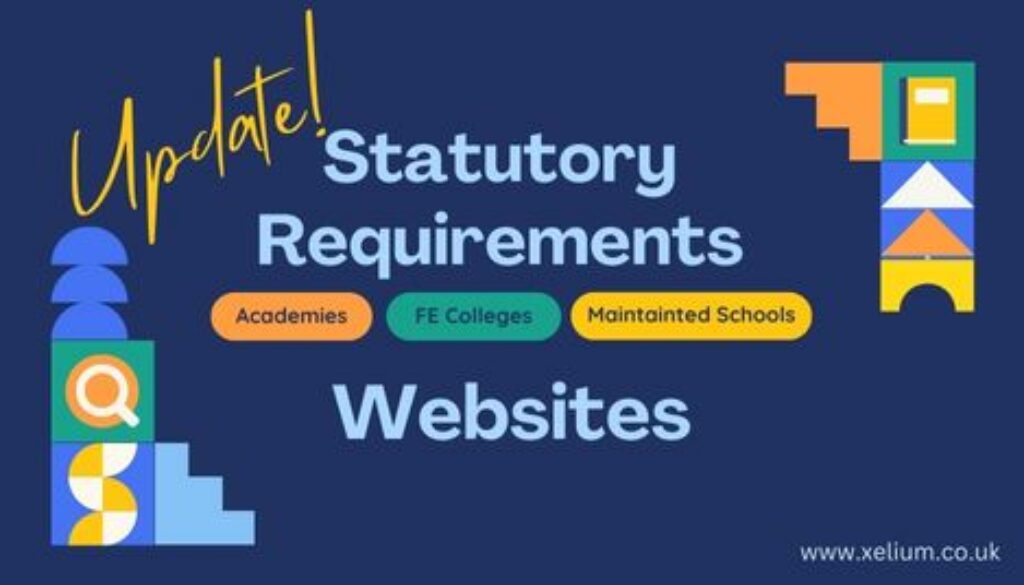What Your School Website Needs – Schools’ Statutory Website Information
Updated: 10 Feb 2025
It has been over a decade since the Department of Education in the UK first outlined the specific details of information that had to be published on a school website. In the post below we go through some of the most obvious changes.
The most recent updates (October 2024) has had some new additions and some removals. Overall the greatest changes has been to the formatting. Where previously items were listed in order of what appeared to be importance the latest revamp of the statutory requirements are now listed by alphabetical order.
We still strongly recommend that your school website has a specially dedicated webpage entitled Statutory Website Information.
The details on that webpage should follow the order listed in the linked to ensure that all statutory information is provided.
For Academies and FE Colleges, please see this page
For maintained schools, please see this page
Even if policies, reports and further links are available throughout the website in their relevant places, we would recommend a specific webpage, clearly linked from the front page of the website (whether as a button or a link on the drop down menu)
Statutory Website Information
What has changed
Formatting
The most significant change in the Oct 2024 update has been the format. Everything is now listed by alphabetical order. We would still recommend that you have a dedicated webpage for Statutory Website Information and copy the format as listed and outlined in the guidance.
There are two sets of guidance. One for Academies, Trusts and FE Colleges (referred to as Academies) and another for Maintained Schools. They are broadly similar but have some distinct differences in some areas that only pertain to each. For example, only Academies need to publish Annual Reports and Accounts. The Academies version also allows the school to make more of their own decisions, with several areas now changes from must be published to should be published. Among them, Ofsted reports are now seemingly optional for Academies.
The following is a quick run-down of changes, which is by no means complete nor comprehensive but is intended to provide a quick insight into the changes of Statutory Requirements from October 2024 onwards.
Academies, FE Colleges
- Careers programme is now a must publish
- Curriculum has changed from should to must publish
- Main additional requirement this time round: Music development plan
- Music development plan is now a must publish
- Ofsted report changed from must to should publish
- School uniform changed from must to should publish
- Paper copies changed from must to should be available
Maintained schools
- The previous update required detailed SEN information. This has not changed.
- Main additional requirement this time round: Music development plan
- Music development plan is now a must publish
- Test, Exam and Assessment results
All Key Stages (KS 2,4 and 5) more information is required to be published. Previously, greater leeway was given due to covid interuptions, but these have now returned to the ‘must be published’ category. - School opening hours is now a must publish
For the detailed requirements of Statutory Website requirements
For Academies and FE Colleges, please see this page
For maintained schools, please see this page

